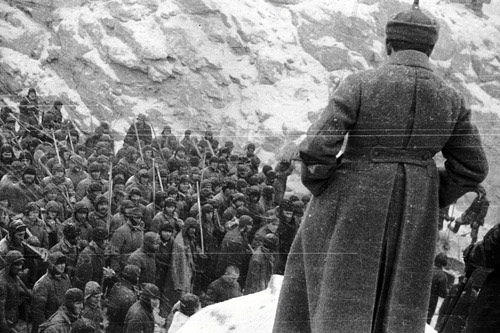The Genius of Photography… BBC4
It is the IDI Design Week in Dublin and a flurry of events are taking place. We hope to bring you some reports of what our contributors thought of these in the near future. In the meantime perhaps it is wise to step back a little. The last week or so has been generous in providing material for designers of all types on television.
BBC4 has been screening a fascinating six party series on the history of photography. Last night in ‘Documents for Artists’ there was an hour on the experimentation and utopianism of the 1920s and 1930s. From Rodchenko to Man Ray this was a period of ferment with remarkable and still innovative approaches to photography being pursued across Russia, Europe and the United States. What was perhaps most interesting was the way in which similar techniques were adapted for widely varying social, cultural and political ends.
The concentration on the ‘revolutionary’ aspects of photography during that period seems at this remove almost naive as does the belief that it would fundamentally alter human lives. Yet the latter proposition is sustained quite credibly as the program unfolds.
There is something profoundly sinister about the photographs of Soviet Communists whose faces have been inked out by Rodchenko during the Stalinist purges. Somehow the process of inking is a greater obliteration of character and person than simply airbrushing them out of existence, perhaps because it leaves evidence of the exercise of a confident and brutal totalitarian power rather than ignoring it. And there is something moving about the passport photographs taken by August Sander of German Jews in the early 1930s already queuing to leave as the National Socialist regime consolidated power. Their faces remain blank in a studied sort of way. There is no hint of the horrors to come.
The place of the photographers in all this is equivocal. Are they recording or participating? The voice over was, perhaps, a little overly charitable in the case of Rodchenko who produced a disturbing image of forced labourers on the White Sea Canal where he adjusted their faces to show them smiling. That is a deceit particularly in the context of the mortality rate of the labourers. The distance between reality and artifice much greater, albeit oddly detached, in the almost overly representational work of Sander (whose own son was imprisoned by the Nazi’s as a Communist and who later died in prison and who Sander photographed in his cell).
Then there are the social historians. Dorothea Lange’s work in the US for the Farm Security Administration during the 1930s. But these were subject to external constraints as with the image of a family of six which was cropped to depict only the mother and three children thereby conforming with more ‘acceptable’ standards of family size in order to validate government assistant to the poor. Deceit there too, even if for the best of motives.
And yet, it is Man Ray with his more aesthetic configurations that was closer to the tenor of this contemporary period. In the ray-traced outlines one can see a future of commercial advertising, fashion photography and experimentation in music and film imagery. His work evades the stolidity of some of the great utopian experimenters, and still remains fundamentally experimental.
It’s a fabulous series and one which clearly charts the pervasive impact and influence of the medium across the century.
As a follow-on there was a screening of “Things to Come” directly afterwards. Produced in 1934 and based on a novel of H.G. Wells this film provided a future history that while bleak in detail, encompassing successive wars, ended on an optimistic note with humanity reaching into space. The acting is – to be charitable – somewhat wooden. Yet visually it is a treat presenting apocalypse and evolution in equal measure and with sets replete with modernist stylings.
Meanwhile, the BBC1 is screening a programme on Helvetica this evening… Not entirely clear from the listings if it is an edited version of the documentary released this year.
Ciarán Swan
About this entry
You’re currently reading “The Genius of Photography… BBC4,” an entry on Design Research Group
- Published:
- November 6, 2007 / 8:22 pm
- Category:
- Photography, Political Design, Popular Culture, Representation, Society, Technology
- Tags:



No comments yet
Jump to comment form | comment rss [?] | trackback uri [?]